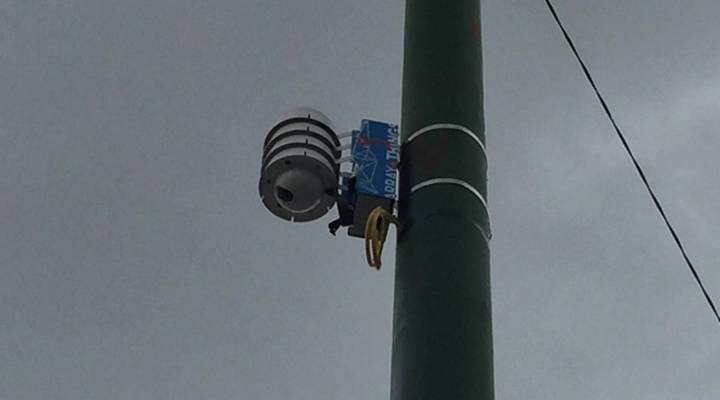
Chicago puts sensors to work taking its vitals

The city of Chicago is trying to get to know itself a little better.
The city, in partnership with the University of Chicago and the Argonne National Laboratory, recently began constructing the Array of Things — a network of 500 data sensors that will track the city’s vitals.
Perched on traffic signal poles, its sensors will monitor things like traffic flow, pedestrian traffic and air quality. The Array of Things is funded largely by a $3.1 million grant from the National Science Foundation, and is set to be fully installed by 2018.
“Typically cities are being measured in five or 10 places, and then we say ‘that’s the air quality of the city,’” said Charlie Catlett, director of the University of Chicago and Argonne Laboratories’ Urban Center for Computation and Data. “What we are trying to do is provide data for people who study cities, or people who make decisions about cities, that is much richer in terms of the resolution.”
One of the first few sensors to have already been installed is at a busy intersection in Southwest Chicago. The sensor is sleek plastic and aluminum, and it includes a small camera that points into the intersection. Catlett said it will not only try and record every accident there, but every near miss too.
“We’ll know if someone gets in an accident there,” he said. “We will know if there is a fatality. We won’t know if leading up to those accidents there are patterns of people rolling through the intersection, patterns of people trying too fast. So this is a way to starting to look at that data to get us to that goal.”
This idea for a sort of city-wide Fitbit is catching on: similar projects are in the works in Seattle, Atlanta and Chattanooga.
The network does not keep any personally identifiable information — almost all pictures snapped by the sensor’s cameras, for example, are supposed to be deleted after the images are processed. But Lee Tien, senior staff attorney with the Electronic Frontier Foundation in San Francisco, isn’t convinced. He consulted on the network’s privacy policy.
“Any time you have any kind of recording device, whether it’s in a shopping mall or in the Array of Things — with the right legal process the government can turn it into a system that spies on you,” he said.
Tien suggested building safeguards into the sensors to do something like make it impossible for them to retain pictures after a certain period of time.
“All technology today, unless it’s very carefully designed to not be able to do more, usually can do more,” he said.
Catlett said he’s open to that idea in the future, but that right now it would limit the network’s research potential.
Standing in a Southwest Chicago parking lot near one of the first sensors, Arelis Morales said she isn’t worried. “There’s places in the city that need stop signs and lights that aren’t there, ” she said. “And I think that is pretty cool, because then they can see that.”
There’s a lot happening in the world. Through it all, Marketplace is here for you.
You rely on Marketplace to break down the world’s events and tell you how it affects you in a fact-based, approachable way. We rely on your financial support to keep making that possible.
Your donation today powers the independent journalism that you rely on. For just $5/month, you can help sustain Marketplace so we can keep reporting on the things that matter to you.












